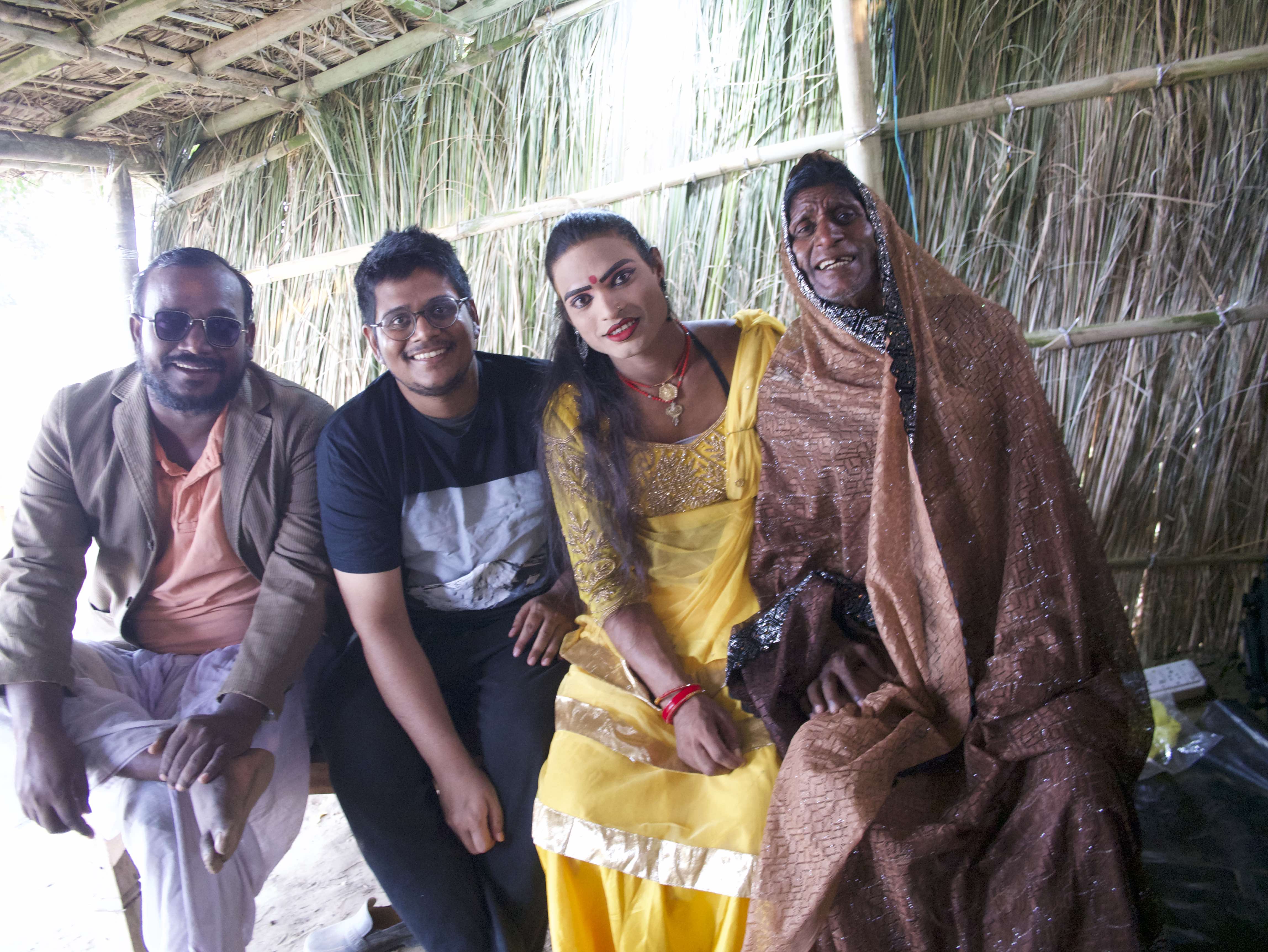Naach/Musical, Bhojpuri and English, 40mins
From Chanakewatia, Farhada, Kanaela & Sadikpur; Bhojpur & Patna-Sahib, Bihar
Making Lattar [Vine]: a devised Launda Naach Performance
Research and Workshop setup for Collaborative Writing, Sharing and Structuring
to make a Contemporary-Folk Performance in collaboration with ‘folk’ artists, devised from the traditions of Naach, becoming Launda and Nirgun; Based on real life incidents
Collectively authored by Sunaina (Sunil Ram), Raju Ranjan, Piyush Kashyap & Sipahi Lathor
First version of the play was comissioned by Maraa Media & Arts Collective
2024
In a house he has constructed, a man searches for space to express his sorrow.
Because the show must go on, a Launda Naach artist is forced to continue performing while he receives the news of his spouse’s death.
A person dreams of their lover sending them a love-letter.
A Launda Naach artist recalls having barely escaped dominant caste men trying to sexually harass him.
‘My wife loves me like a Launda’— a Naach artist shares few details from their love life.
zeropowercut’s specific role in the project was to collate and co-conduct on-field as well as theory based research on gender and ‘folk’ art/artist, design and conduct sharing and workshop sessions, co-organise and co-manage logistics and production, co-write songs and dialogues, and conceptualise scene-structure of the play.
*Launda Naach is a folk dance of the Bhojpuri speaking Community of India, Nepal, Mauritius and the Caribbean Islands. It is performed by males who dress as women to become ‘Launda’— a term which can mean: female impersonator, feminine man, queer man, and/or-alternatively a ‘folk’ artist-performer who practices this art-form. The term ‘Naach’ literally means dance, but in folk traditions can mean a mix of dance, drama, theatre, performance and storytelling. [Wikipedia]












Short excerpts of 3 songs/scenes we made:
Scene 2
Because the show must go on, a Launda artist is forced to continue performing while he receives the news of his spouse’s death
Raju told me this story. He wanted this story to be part of the play and its expression of ‘masculinity’. This is the story of a naach artist with whom Sunaina has shared stage, and whom Raju has seen perform many times. We started working with this memory and history, and soon hit the form of reprise: With all that goes in a naach performance (teasing, show of ‘upper’ caste masculinity, firing guns), the crisis resounds again and again; in this we are unsure—
—Is Chilgozra shackled to the stage or committed to naach?
Scene 4
A Launda artist recalls having barely escaped dominant caste men trying to sexually harass him
The artist whose story this is, narrated and sang their traumatic memories to us, as we met them for ‘research’. More artists among the listeners began recounting their own accounts of harrasment from the dominant caste men. We wrote this scene with elements from two incidents. For this scene, the dancing stops, and the dancer, Sipahi tells a story.
Scene 5
My wife loves me like a Launda—
While praise and humiliation stand shoulder to shoulder in crowd, there is certain hope when one is accepted and loved as they become many/other on stage, in life— we leave the play with this hopeful turn of embraced-becoming. Inspired by Sipahi’s story, we return to love; to freedom of expression in the many languages of love.
all scenes:
performed by Raju, Sunaina & Sipahi
music by Raju and Sunaina
co-written by Raju and Piyush
structured and conceptualised by Piyush
food and shelter by Puneet